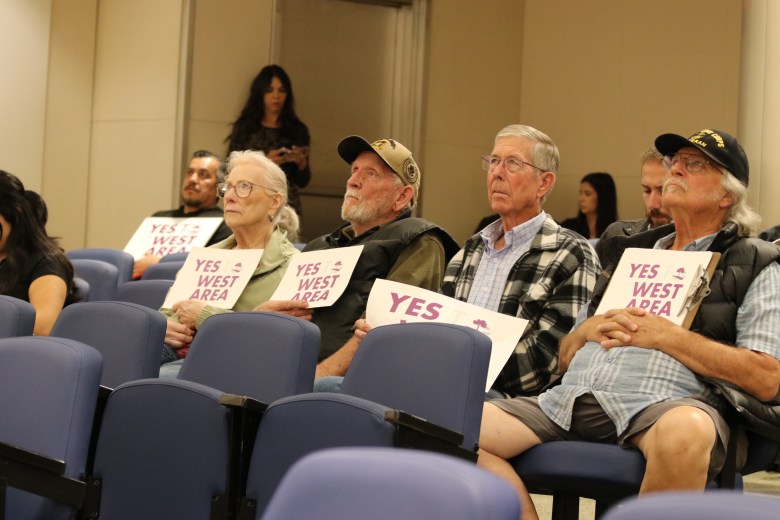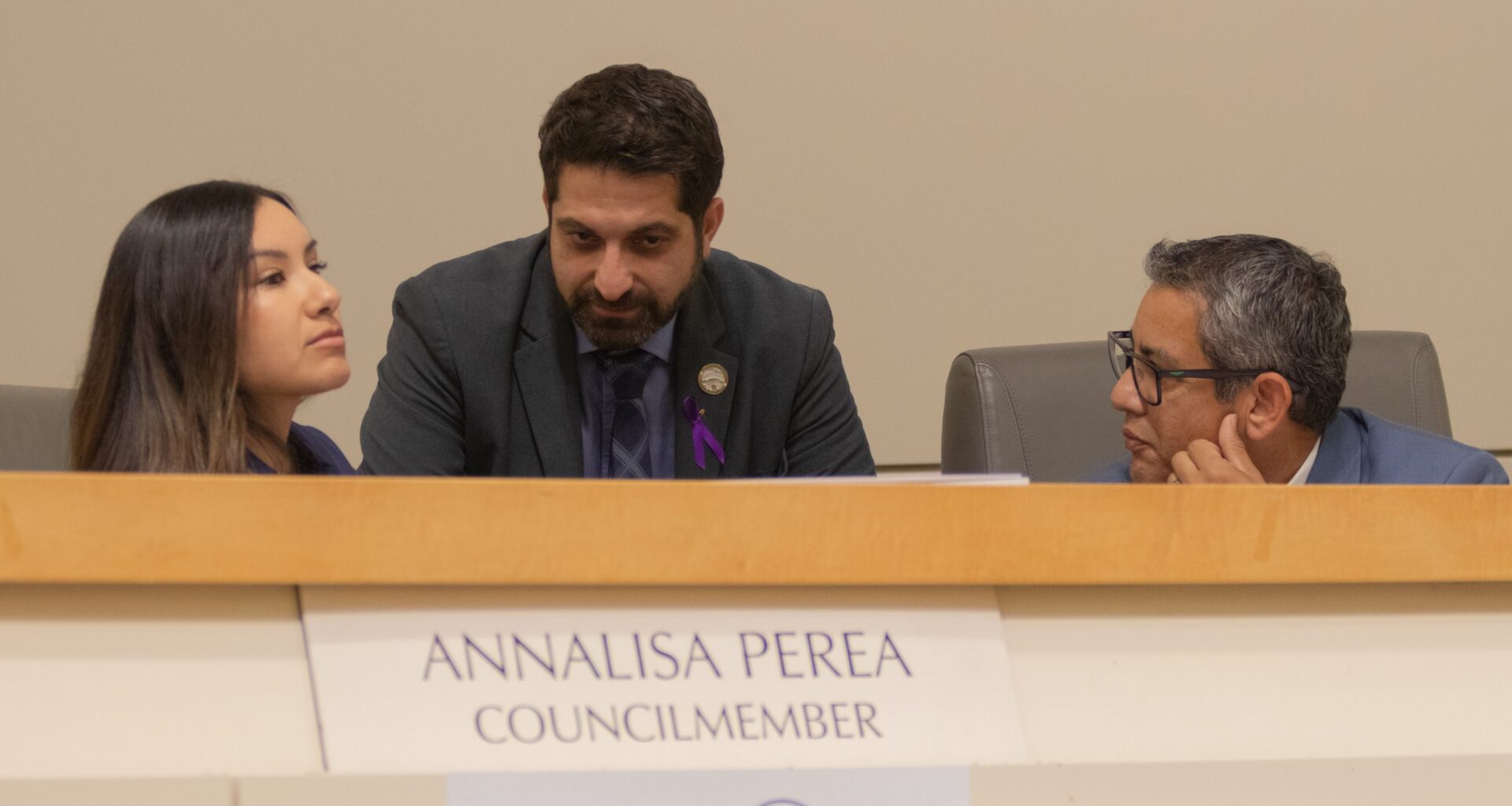What’s at stake?
Residents are optimistic the new plan will improve their broken sidewalk networks and facilitate the construction of more grocery stores, banks and health care facilities — only a handful of which currently serve the community of over 50,000, including 40,000 residents of the city proper.
The Fresno City Council unanimously approved a new plan for the neighborhoods west of the 99 highway on Thursday in a move proponents believe will pave the way for benefits like more walkable neighborhoods while combatting the food and other resource deserts plaguing the west area.
Going into Thursday’s meeting, not all councilmembers were fully on board, disheartening some residents who had awaited the new land use plan’s approval for seven years.
But the entire council, including all three members who represent Fresno residents west of the 99, threw their support behind the West Area Neighborhoods Specific Plan on Thursday.
“I firmly believe that west of the 99 is about to boom,” said Councilmember Annalisa Perea, who represents the plan area between Shaw and Clinton avenues. “While I would have preferred to see this plan 20, 30, 40 years ago, it is coming today.”
The new policy establishes guidelines for future development west of the major highway, including anything from homes and retail establishments to parks and sidewalks.
Residents are optimistic the new plan will improve their broken sidewalk networks and facilitate the construction of more grocery stores, banks and health care facilities — only a handful of which currently serve the community of over 50,000, including 40,000 residents of the city proper.
“It’s a plan that’s asked to do a lot of things and deal with a lot,” said Daniel Brannick, a board member for Highway City Community Development, Inc., who spoke in favor of the plan. “Promote growth and new development. Preserve rural and agricultural landscapes and cultural traditions. Work for residents and work for developers. Reconcile very diverse interests that reflect the diversity of this community.
“It’s a daunting challenge,” he added. “This plan does it.”
The plan also designates more green space for the west area, which currently has only one neighborhood park and a little over seven acres of “pocket parks.”
But the council on Thursday departed from Planning Department staff’s recommendation on where exactly to plan for a new regional park in the west area. Staff had recommended a 52-acre regional park straddling the north and south sides of Shaw Avenue with a pedestrian bridge connecting the two sides.
Councilmember Mike Karbassi, who represents the plan area north of Shaw, advocated instead to designate two separate tracts of land as parks: the southern half of the area staff had recommended on along Shaw, plus a plot in the plan’s northernmost stretch located between Herndon and Bullard. He cited concerns over pedestrian safety and financial feasibility.
“I think having it on one side of the street, whether it’s south or north, is better. It’s safer. I love the idea of the pedestrian bridge being a draw,” he said, adding, “we’re never going to build it. The money will not be there. I’m sorry.”
The rest of the council backed Karbassi’s alternative proposal for the park locations.
Residents waited seven years, plus a little over four hours Thursday for the council to make a decision on the west area plan after the council’s previous agenda items ran long.
But over a dozen community members still came forward during public comment, the majority of whom urged the council to support the plan.
“This plan means more than just words on paper,” said Alisia Yang, a resident and parent in the west area. “This also represents the future of our community — a future where our children can walk to school on safe sidewalks and crosswalks, where families can buy healthy foods close to home, where families can access nearby clinics and where working families can live in a neighborhood that truly supports their needs.”
A few commenters objected not to the plan as a whole but to their specific property’s proposed zoning changes.
Ultimately, the council approved three of the six requests, including one from Jeffrey T. Roberts on behalf of TCM, Inc. to retain higher-density residential zoning on a 19-acre area on Cornelia Avenue between Dakota and Shields. The change allows for 78 additional units of housing capacity, according to staff.
 Residents waited seven years, plus a little over four hours Thursday for the council to make a decision on the west area plan after the council’s previous agenda items ran long. But over a dozen community members still came forward during public comment, the majority of whom urged the council to support the plan. Credit: Julianna Morano | Fresnoland
Residents waited seven years, plus a little over four hours Thursday for the council to make a decision on the west area plan after the council’s previous agenda items ran long. But over a dozen community members still came forward during public comment, the majority of whom urged the council to support the plan. Credit: Julianna Morano | Fresnoland
Another round of new regulations for sidewalk vendors
The council also took a first look at two amendments to a controversial ordinance regulating the city’s sidewalk vendors during Thursday’s meeting.
The first amendment would ban sidewalk vendors from setting up in the Tower District Friday, Saturday and Sunday nights from 6 p.m. to 3 a.m.
The second proposes an increase to the fines for vendors who cook with barbecues, grills and other heated surfaces without a permit anywhere in the city. The new proposed fines go as high as $500 after repeated violations.
The amended ordinance attributes the ban on vendors in the Tower to increased “incidents of public intoxication,” calls for service to Fresno police and gang activity in the neighborhood at night.
“The Fresno Police Department (FPD) has identified the presence of food vendors as a key factor in attracting and prolonging large, disorderly crowds” in the area, the amended ordinance reads.
This is the latest in a string of new regulations the city slapped mobile food vendors with over the past year to the objection of advocates who say the ordinance carries the greatest punishment for vendors who follow the rules and can’t spare the income.
Some business owners spoke in favor of the amendment in person Thursday and via written comments, saying they’ve had issues competing with unpermitted vendors selling near their establishments.
“Our business owners, employees, and customers regularly encounter issues related to
sidewalk congestion, improper food handling, and unsafe public conditions that
compromise the quality of life and deter visitors,” wrote the Tower District Business Association President Anthony Armour in a letter submitted to the council.
Street vendors and advocates objected to the amendment, however, calling it “Trump-esque” and saying it scapegoated street vendors for problems they didn’t cause.
“The blame that is being placed on street food vendors,” said Veva Islas, executive director of Cultiva La Salud, “everything (from) gang activity to increased violence, is shameful.”
“Vendors are responding to a supply and demand gap,” said Ariana Martinez-Lott, an advocate for vendors who’s now running for city council. “Some bars serve alcohol with limited or no food options.”
The council will take two votes on this policy, as is standard procedure with approving city ordinances. The item failed to pass in the first vote Thursday, however, with councilmembers Nelson Esparza, Nick Richardson and Tyler Maxwell voting against it while Perea and Brandon Vang voted in favor.
One of the item’s co-sponsors, Councilmember Miguel Arias, was absent for Thursday’s vote, as was Karbassi.
City Clerk Todd Stermer confirmed that the item will still come back before the council for a second and final vote, despite failing at Thursday’s meeting.
Three more city worker contracts approved
The city council also approved new agreements with three different city workers’ unions on Thursday.
That included deals with the City of Fresno Professional Employees Association, the Fresno City Employees Association and the Amalgamated Transit Union Local 1027. All three agreements cover just over a one-year period from mid-June of this year to December 2026.
The council approved a side letter agreement with International Union of Operating Engineers, Stationary Engineers, Local 39, as well, though negotiations over a new contract are still ongoing.
The agreement with ATU comes after a dispute last month that led the city to file an unfair labor practice claim against the union with the Public Employment Relations Board.
Specifically, the city alleged that union leaders backed out on a signed deal and repeatedly tried to change terms after the fact.
The city entered negotiations with all 11 of its bargaining units this summer. It has subsequently reached agreements with six of the bargaining units so far following Thursday’s vote.
Related

